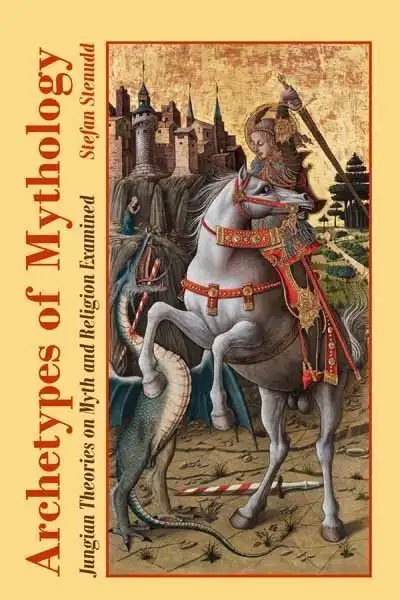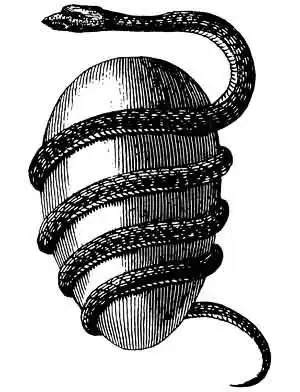
Archetypes of MythologyJungian Theories on Myth and Religion ExaminedCarl G. Jung broke with Sigmund Freud to develop his own form of analytical psychology, based on the ideas of the archetypes and the collective unconscious. He also found those concepts exhibited in myth and religion. Jung got a number of followers, some quite illustrious, such as Joseph Campbell and recently Jordan B. Peterson. This book presents and critically examines the imaginative theories of Jung and the Jungians about mythology and religion, as expressed in their own texts. Although discredited within psychology, these ideas have had a considerable influence on art, literature, New Age esotericism, and movie-making. Still, they can and should be questioned.
How to get the bookIf you want to buy the book, you can do so at most Internet bookstores. Click the image below to see the book at Amazon (paid link). The link takes you to your local Amazon store (or to Amazon.com).
 
Introduction(Excerpts from the book)
Also, it made sense regarding the content. The Freudian and the Jungian views differ considerably and profoundly. Therefore, each tradition is better to treat separately, for the sake of clarity and consistency.
That changed when Carl G. Jung broke free and developed his own paradigm, which was quite different and deviated increasingly as he continued to develop it. He was quite peripheral at first. Freud dominated the scene. But by time, Jung’s alternative attracted more and more attention, though not primarily from psychologists and psychiatrists. Instead, he was increasingly read and respected by anthropologists, mythologists, authors, artists, and the general public. In accordance with the variety of his audience, those who picked up on his ideas in their own writing were quite a diverse group. Many were not even primarily interested in psychological aspects, but focused on the myths and Jung’s ideas as tools to explore them. That had the distinct benefit of the Jungian line being much less constrained and controlled than that of the Freudians. It is strikingly obvious in the Jungian texts. They dare to deviate considerably from Jung, even when praising him as their source and guiding light. There is something about Jung’s thoughts that invites creativity instead of conformity. He is used as a trampoline by which to reach new heights and perspectives, and not at all a standard to obediently repeat. This is definitely a winning recipe, indicating that Jung will remain much longer and with more appreciation than Freud — at least regarding speculations about mythology and religion. As for therapeutical benefits, both are probably going to be of diminishing value, until they fade away completely. They just don’t have the track record to be sustainable.
ContentsIntroduction 7Carl G. Jung 21 Jungians 210 Erich Neumann 212 Károly Kerényi 224 Joseph L. Henderson 229 Joseph Campbell 238 Mircea Eliade 287 Marie-Louise von Franz 300 Charles H. Long 318 James Hillman 330 Anthony Stevens 357 David Adams Leeming 395 Jordan B. Peterson 414 Literature 469

MYTH
IntroductionCreation Myths: Emergence and MeaningsPsychoanalysis of Myth: Freud and JungJungian Theories on Myth and ReligionArchetypes of Mythology - the bookPsychoanalysis of Mythology - the bookIdeas and LearningCosmos of the AncientsLife Energy EncyclopediaOn my Creation Myths website:
Creation Myths Around the WorldThe Logics of MythTheories through History about Myth and FableGenesis 1: The First Creation of the BibleEnuma Elish, Babylonian CreationThe Paradox of Creation: Rig Veda 10:129Xingu CreationArchetypes in MythAbout CookiesMy Other WebsitesCREATION MYTHSMyths in general and myths of creation in particular.
TAOISMThe wisdom of Taoism and the Tao Te Ching, its ancient source.
LIFE ENERGYAn encyclopedia of life energy concepts around the world.
QI ENERGY EXERCISESQi (also spelled chi or ki) explained, with exercises to increase it.
I CHINGThe ancient Chinese system of divination and free online reading.
TAROTTarot card meanings in divination and a free online spread.
ASTROLOGYThe complete horoscope chart and how to read it.
MY AMAZON PAGE
MY YOUTUBE AIKIDO
MY YOUTUBE ART
MY FACEBOOK
MY INSTAGRAM
MY TWITTER
STENUDD PĹ SVENSKA
|
